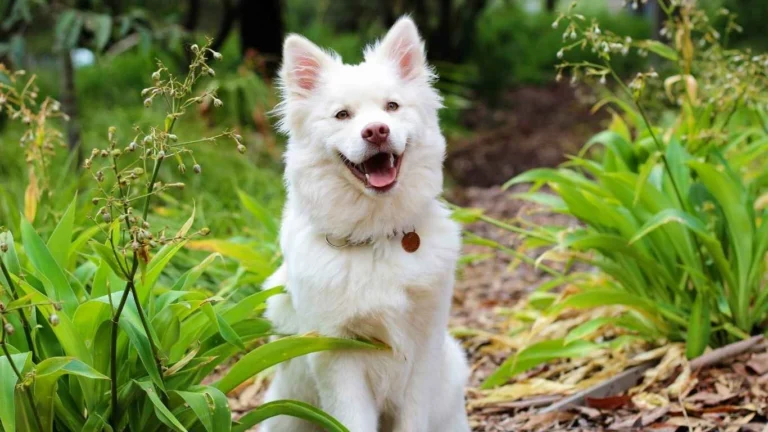Easy Ways to Prepare a Calming Meal for Anxious Dogs
Dogs can feel anxious just like people do. If your furry friend seems nervous, jumpy, or restless, they might benefit from more than just extra cuddles—calming meals can help too. Preparing the right food can make a big difference in easing their stress. This article will walk you through how to make a soothing meal for an anxious dog, and why it works.
Understanding Anxiety in Dogs
Anxiety in dogs is a natural response to stress, fear, or changes in their environment. Like humans, dogs have a nervous system that reacts to certain triggers. When something feels threatening or unfamiliar, their brain sends signals that can make their heart race or cause tense muscles.
The part of the brain involved in this response is called the amygdala. It helps control emotions and fear. If a dog feels threatened often, their body can stay in a state of alert, which is stressful over time. This can lead to changes in appetite, digestion, and behavior.
Some dogs are more prone to anxiety due to their breed, past experiences, or lack of socialization. Others may develop it from medical issues or aging. Whatever the cause, the goal is to create a calm, stable environment—including through what they eat.
How Calming Food Helps
Calming meals work by supporting a dog’s nervous system and digestive tract. Certain nutrients can help regulate mood, reduce inflammation, and even boost the production of calming brain chemicals like serotonin and GABA (gamma-aminobutyric acid).
Just like humans, dogs have a gut-brain connection. This means what goes into their stomach can affect how their brain works. A balanced, soothing diet can help reduce tension and support overall emotional well-being.
Some ingredients are known to have relaxing properties, while others may trigger more excitement or stress. That’s why choosing the right food matters. A calming meal is not a cure-all, but it can be part of a bigger plan to help your dog feel safe and comfortable.
Common Causes of Anxiety in Dogs
- Separation: Being left alone for long periods.
- Loud noises: Fireworks, thunderstorms, or vacuum cleaners.
- Changes: New home, new family members, or moving furniture.
- Past trauma: Rescue dogs may carry fears from previous abuse or neglect.
- Lack of stimulation: Not enough exercise or playtime.
- Medical issues: Pain, thyroid imbalances, or aging-related cognitive decline.
If you’re noticing symptoms like hiding, whining, chewing things, or shaking, food changes may help, but it’s also good to check in with your vet. A combination of care works best.
Symptoms That May Improve with Calming Foods
- Restlessness or pacing
- Loss of appetite or digestive upset
- Excessive licking or chewing
- Difficulty sleeping
- Frequent barking or howling
- Clinginess or hiding
These symptoms can come and go, but if they continue for more than a few days or get worse, talk to your veterinarian. Sometimes anxiety is a sign of another health problem.
Ingredients That Soothe
Here are a few ingredients you can add to your dog’s meals to help support a calmer mood. Always introduce new foods slowly and check with your vet first, especially if your dog has allergies or is on medication.
- Turkey: Contains tryptophan, an amino acid that promotes serotonin production.
- Brown rice: A gentle source of carbohydrates that provides steady energy.
- Sweet potatoes: High in fiber and vitamins, supports digestion and brain health.
- Chamomile: Can be used as a cooled tea or dried herb for calming effects.
- Pumpkin: Aids digestion and is rich in calming nutrients like magnesium.
- Oats: Whole oats can help stabilize blood sugar and promote calm behavior.
- Blueberries: Packed with antioxidants that may reduce stress in the body.
- Fish (like salmon): High in omega-3 fatty acids, which help reduce inflammation and anxiety.
Make sure to cook meat thoroughly, avoid spices, and serve meals warm (but not hot). Avoid onions, garlic, grapes, raisins, and chocolate—these are toxic to dogs.
Sample Calming Meal Recipe
Here’s a simple, homemade recipe you can try:
- 1 cup cooked ground turkey (no seasoning)
- 1/2 cup cooked brown rice
- 1/4 cup mashed sweet potato
- 1 tablespoon plain canned pumpkin (not pie filling)
- 1 teaspoon ground flaxseed or a drizzle of fish oil
- Optional: 1 teaspoon cooled chamomile tea poured over food
Mix all ingredients together and serve at room temperature. Store leftovers in the fridge for up to three days.
This meal is easy to digest and includes calming nutrients. It’s not a complete diet for long-term use, but it’s a good short-term support during stressful times like vet visits or storms.
When to Talk to Your Vet
If your dog shows signs of anxiety often, or if their behavior changes suddenly, it’s best to get a professional opinion. Your vet can rule out medical issues, recommend calming supplements, or refer you to a behaviorist if needed.
Some signs that it’s time to seek help include:
- Refusing to eat or drink
- Frequent vomiting or diarrhea
- Aggression or self-injury
- Excessive trembling or hiding
- Symptoms that don’t improve with home care
Your vet can help you figure out if the anxiety is temporary or part of a larger issue. They might suggest prescription treatments, calming chews, or even changes in your dog’s environment to reduce stress triggers.
Final Thoughts
Making a calming meal for your anxious dog is a caring and proactive step. While food isn’t the only answer, it can support other efforts like training, routine, and play. Just like people, dogs feel better when their body and brain are both in balance.
Try adding calming ingredients slowly, and watch how your dog responds. If you’re not sure where to start, a quick chat with your vet can guide you in the right direction. Every dog is different—but with a little patience and the right approach, you can help your furry friend feel more at ease.





